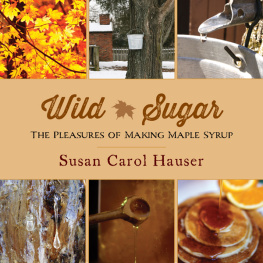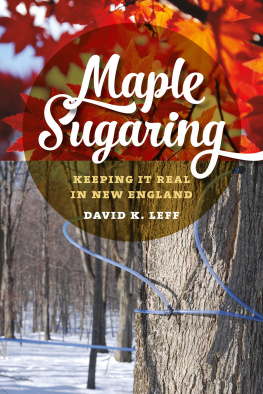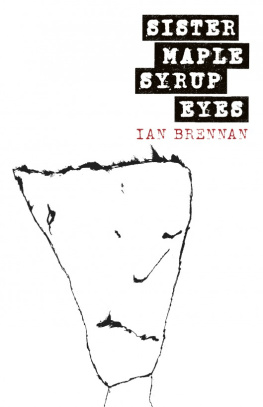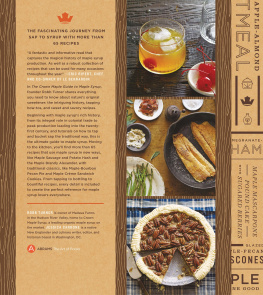Other Books by Susan Carol Hauser
NATURAL HISTORY
Wild Rice: An Essential Guide to Cooking, History, and Harvesting
A Field Guide to Poison Ivy, Poison Oak, and Poison Sumac: Prevention and Remedies
A Field Guide to Ticks: Prevention and Treatment of Lyme Disease and Other Ailments
Caused by Ticks, Scorpions, Spiders, and Mites
Guide to the North Country National Scenic Trail in Minnesota, with Linda D. Johnson
NONFICTION
My Kind of River Journey: Seeking Passage on the Mississippi
Full Moon: Reflections on Turning Fifty
Which Way to Look
Meant to Be Read Out Loud
You Can Write a Memoir
Girl to Woman: A Gathering of Images
What the Animals Know
POETRY
Redpoll on a Broken Branch
Outside After Dark
Forager
Copyright 1997, 2014 by Susan Carol Hauser
Foreword copyright 1997 by Will Weaver
All Rights Reserved. No part of this book may be reproduced in any manner without the express written consent of the publisher, except in the case of brief excerpts in critical reviews or articles. All inquiries should be addressed to Skyhorse Publishing, 307 West 36th Street, 11th Floor, New York, NY 10018.
Skyhorse Publishing books may be purchased in bulk at special discounts for sales promotion, corporate gifts, fund-raising, or educational purposes. Special editions can also be created to specifications. For details, contact the Special Sales Department, Skyhorse Publishing, 307 West 36th Street, 11th Floor, New York, NY 10018 or .
Skyhorse and Skyhorse Publishing are registered trademarks of Skyhorse Publishing, Inc., a Delaware corporation.
Visit our website at www.skyhorsepublishing.com
10 9 8 7 6 5 4 3 2 1
Library of Congress Cataloging-in-Publication Data is available on file.
Paper ISBN: 978-1-62914-221-0
Ebook ISBN: 978-1-62914-299-9
Printed in China
PERMISSIONS
Grateful acknowledgment is made to the following for permission to reprint material:
University of Minnesota Press, for portions of Sugartime previously published in North Writers II, 1997.
Minnesota Monthly for recipes and photograph.
Reynolds Sugarbush Catalog for catalog cover and photos.
For photographs: Karen-lisa Forbes, Michael Forbes, Tammy Wentworth; John Gairy; Beltrami County Historical Society, Bemidji, Minnesota, and Roxbury Mountain Maple, Roxbury, New York.
For art work: Michael DeWitt; Joan Nygren; Martin Skoro; the family of Terri Anderson; Minnesota Calls magazine.
MY THANKS
To Earl Nyholm, for the story of anininaatig, the sacred maple, and to Robert, Carmen, and Douglas Maschler, and Rolland and Jenny Warner, for their stories.
To Hilda Rachuy; Mary, Andy, Sonja, and Danny Clemenson; Rose and Will Weaver; and Chabin Blanc, for joining Bill and me in the circle of the trees.
To Martha Dunaway, for her maple recipes.
To Dave and Tammy Wentworth, for their knowledge of the finer points of sugaring.
To Karen-lisa and Michael Forbes, for their enthusiasm and photos.
To Lilly Golden, Tony Lyons, and Skyhorse Publishing, for keeping the fire aglow.
This kettle song is for Bill; and for Chery, Joel, and Sean; Kathy, Scott, and Chabin; and Barbara, Myron, Kael, and Dustin; Will and Rose; Andrew, Debbie, and Wren; Nancy; and all who have worked in the sugarbush kitchen.
CONTENTS
INTRODUCTION
This book was first published in 1998 as Sugartime: The Hidden Pleasures of Making Maple Syrup, with a Primer for the Novice Sugarer . In 2005 it was published as Sugaring: A Maple Syrup Memoir with Instructions . Now, in 2014, it has a new name, Wild Sugar: The Pleasures of Making Maple Syrup , a new look, and a new publisher. The sugaring process itself has changed little over these years, but my life has changed a great deal. My husband and sugaring partner, Bill, has passed away, and a granddaughter, Wren, has come into my life. We have sugared togetheryoull see her in some of the new pictures in this bookhave picked sap, tended the fire, sugared off, and enjoyed the sweetness of the syrup and of doing good work.
The sugaring book, as we call it at my house, has been in print for fifteen years. Thats quite a long time and I think it shows that cyberspace is not the only space that occupies us: we are still called to the inner places of the woods and the heart, brought together in the fact of maple syrupin its subtle scent and its bright taste, and in the telling and receiving of this age-old story that becomes new again every spring.
Susan Carol Hauser
Minnesota, 2014
FOREWORD
Impatience is our nightmare, the poet Philip Levine has written. He was referring to the ever-accelerating pace of modern life and its great pains upon our spirit; in particular he suggests that we have lost our ability to work quietly, steadily within the embrace of our work and with faith in the eventual pleasure of completion. Franz Kafka, too, had his complaints in the area. For humankind, he wrote,... perhaps there is only one major sin: impatience. Because of impatience they were expelled (from paradise), because of impatience they do not return.
Impatience. No one is immune. However, to read Susan Carol Hausers Wild Sugar is to return to the one small paradise available to everyone: the slow pleasures of good work.
Let me explain what I mean by good work. A few years ago, as my contribution to a friends wedding day, I volunteered to roast a pig. It had been years since I had done this sort of thing, and of course it quickly became far more labor than I remembered. With ten minutes and fifty dollars I could have gone to the meat market and bought a wedding ham that would have made Charles Dickens proud, but no, here I was, the night before the wedding, stuck turning a hog on a hot iron spit while everyone else went off to dance. Resignedly I tended to my work. By ten p.m. I was irritable; by eleven oclock, tormented; by midnight, exhausted. At one a.m. the partiers came back and gathered boisterously around the fire; their company lifted my spirits, but the dancers were danced out and soon enough straggled off to bed, leaving me alone, again, with my fire and my hog. Throughout the night I kept the coals cherry red and the meat cooking, an interminable nightuntil, slowly, like a tide of moonlight or a change in the weather, something magical happened. In the steady rhythms of the fire, in the continual hiss and snap of grease falling on red coals, in the gradual slowing down of my life, I began to wake up. I woke up from one kind of work, one kind of time, one kind of life, and crossed into another. It was four a.m., not a car on the street, nighthawks gone back to their nests and the earliest birds still dozing in the darkest hour before dawn, but I was happily, joyously wide awake: I had stumbled upon good work, the kind that slows time and deepens the spirit.
Maple sugaring, it seems clear to me from reading Wild Sugar , is a similarly good kind of work. Maple sugaring will not be hurried. It is more than the work of one night or one week; its rhythms are measured in sunlight and shadow, in the tilt of the earths axis and in the ancient memories of trees. There is much work and there is much waiting: waiting for the late winter snow to loosen its grip on the necks of the sugar maple trees; working to hammer in the taps, to hang the buckets and then wait again. When the temperature eases up to forty-five degrees, Susan Carol Hauser writes,... anticipation is rewarded. A drop of sap quivers on the end of the spile, then lets go, and another takes its place. Now the real labor begins. Frosty nights and sunny days make the sap come faster; daily there is the gathering of the pails, daily the tending of fire as the great iron kettle simmers and sings. Daily, patiently, this work in the mud and the heat until the earth itself calls a halt: the season is over. What remains are the glowing jars of syrup and, luckily for us, this fine book.










